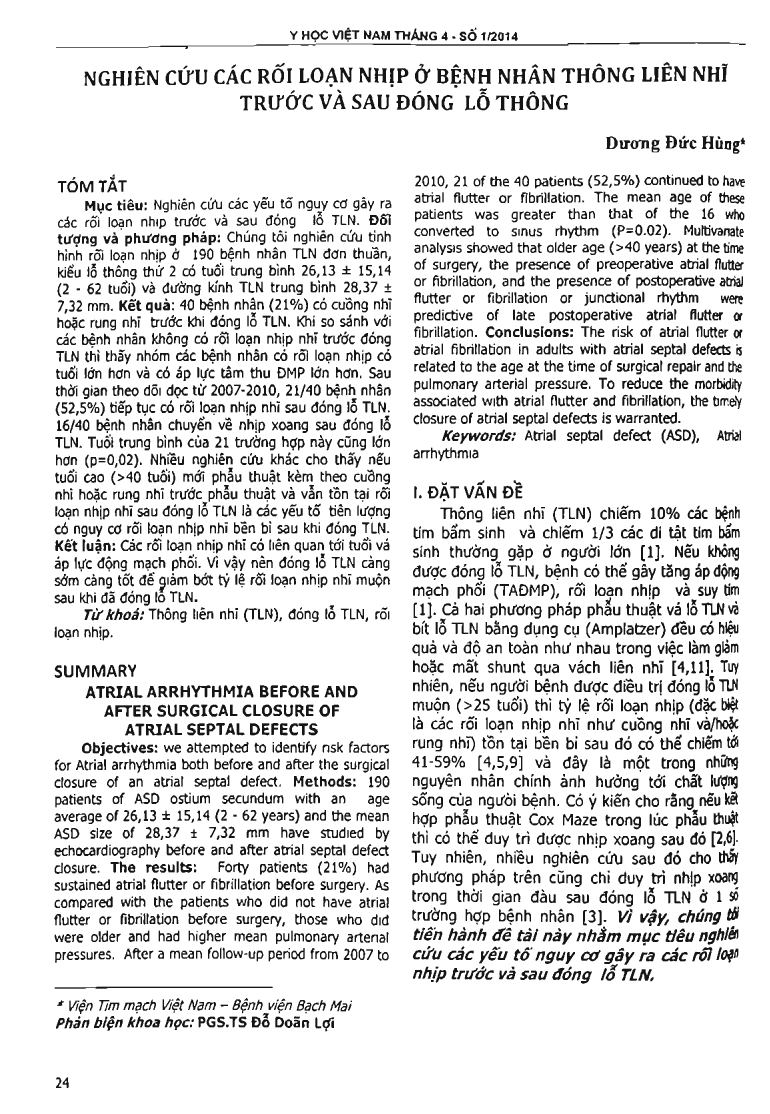
Objectives: the authors attempted to identify risk factors for Atrial arrhythmia both before and after the surgical dosure of an atrial septal defect. Methods: 190 patients of ASD ostium secundum with an age average of 26,13 + or - 15,14 (2 - 62 years) and the mean ASD size of 28,37 + or - 7,32 mm have studied by echocarcJlography before and after atrial septal defect dosure. The results: Forty patients (21 percent) had sustained atrial flutter or fibrillation before surgery. As compared with the patients who did not have atrial flutter or fibrillation before surgery, those who did were older and had higher mean pulmonary arterial pressures. After a mean follow-up period from 2007 to 2010, 21 of the 40 patients (52,5 percent) continued to have atrial flutter or fibrillation. The mean age of these patients was greater than that of the 16 who converted to sinus rhythm (P=0.02). Multivariate analysis showed that older age (40 years) at the time of surgery, the presence of preoperative atrial flutter or fibrillation, and the presence of postoperative atrial flutter or fibrillation or junctional rhythm were predictive of late postoperative atrial flutter or fibrillation. Conclusions: The risk of atrial flutter or atrial fibrillation in adults with atrial septal defects is related to the age at the time of surgical repair and the pulmonary arterial pressure. To reduce the morbidity associated with atrial flutter and fibrillation, the timely closure of atrial septal defects is warranted.
- Đăng nhập để gửi ý kiến
